A comprehensive framework to avert, minimise, and address Loss and Damage
A comprehensive framework to avert, minimise, and address Loss and Damage
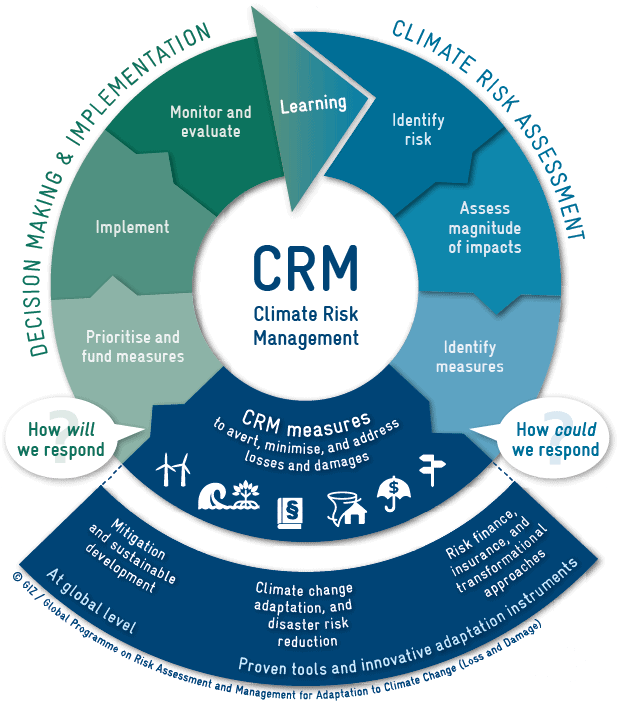
Mainstreaming climate risks into relevant processes and policies at the national and sub-national level fosters a holistic consideration of climate change impacts in affected sectors and highlights the need for specific instruments and data collection, appropriate human and financial resources, and institutional rearrangements.
The first step comprises an assessment of how climate-related hazards interact with the exposure and vulnerability of a system including socio-economic factors. The interaction of these factors determines the overall risk for the affected system.
In order to allow for effective planning, the assessment includes evaluating the magnitude of the expected impacts and the identification of potential losses and damages by applying a suitable combination of methods.
Based on a cost-benefit analysis, the most promising risk management options to deal with risks can be selected and combined into a smart mix of measures. This forms the basis for the integration of climate policy measures into public budgets and national policies.
In order to attain the smartest mix of measures for a given situation, the CRM framework links tried-and-tested measures with innovative instruments and transformational approaches in a comprehensive and integrated way.
Prioritised measures must be context-specific and sustainable, and must engage affected populations. Institutional integration is crucial to mainstream CRM considerations into new and existing development planning and budgeting processes, within all relevant institutions and sectors, and at all levels.
Monitoring and evaluation of implemented measures lead to continuous learning that feeds into the CRM framework and informs future decision making.
The CRM framework allows for decision-makers to take account of fresh evidence and insights, newly available data, and lessons-learnt from monitoring and evaluation. This flexibility is fundamental, especially for integrating innovative and transformative instruments and approaches.
CRA builds the foundation for successful CRM. By identifying risk and assessing the magnitude of impacts on people, assets, value chains, (critical) infrastructure, settlements, and ecosystems, CRA informs decision makers about possible options for action.
The CRM framework informs and supports decision making and implementation. To identify the smartest mix of CRM measures for a given context, it is crucial to understand the organisational and economic ability of countries, communities, and the private sector to adapt and respond to risk.
Risk results from the interaction of vulnerability, exposure, and hazard. While the occurrence of climate-related hazards can be reduced through mitigation measures, the exposure and vulnerability of people and assets are mainly linked to sustainable development indicators and CRM.
The CRM framework combines tried and tested approaches from CCA (e.g. climate-smart agriculture; ecosystem-based adaptation) and DRR (e.g. early warning systems; contingency planning; civil protection plans) to minimise losses and damages.
Risk finance mechanisms (e.g. climate risk insurance; contingency funds; social protection) provide security against the loss of assets, livelihoods, and lives. Transformational approaches include the diversification of livelihoods, flexible and participatory decision-making, and adaptive management approaches.
The effects of climate change are already being felt today: According to the latest climate projections, extreme weather events are set to increase in frequency and magnitude in the future. These events, such as storms/cyclones and floods, along with slow-onset changes like sea level rise and desertification, and the resulting socio-economic aspects pose a growing risk to the sustainable development of all countries and can lead to economic and non-economic losses and damages. Least developed countries (LDCs) and small island development states (SIDS) are particularly vulnerable to such risks, meaning that their natural and social systems are more exposed to the negative impacts of climate change and less able to cope with them. Despite current efforts for mitigation and adaptation, residual risks of adverse impacts of climate change remain. Assessing and managing risks in order to avert, minimise, and address Loss and Damage is therefore of central importance.
You are currently viewing a placeholder content from Vimeo. To access the actual content, click the button below. Please note that doing so will share data with third-party providers.
More InformationThe topic of growing risks from climate change is reflected in many international policy agendas, e.g. in the Sendai Framework for Disaster Risk Reduction, as part of the United Nations Office for Disaster Risk Reduction (UNDRR) and under the United Nations Framework Convention on Climate Change (UNFCCC).
Under the UNFCCC, the topic of Loss and Damage (L&D) has gained growing attention, which led to the establishment of the Warsaw International Mechanism for Loss and Damage associated with Climate Change Impacts (WIM) in 2013 at COP19 as the main vehicle of the UNFCCC to pursue this area of work in particularly vulnerable developing countries in a comprehensive, integrated, and coherent manner.
According to its mandate, the WIM should fulfil the following three core functions: (1) Enhancing knowledge and understanding of comprehensive risk management approaches, (2) strengthening dialogue, coordination, coherence, and synergies among relevant stakeholders, and (3) enhancing action and support, including finance, technology, and capacity building.
In 2015, the Paris Agreement emphasised its importance by introducing L&D as a standalone article:
“Parties recognize the importance of averting, minimizing and addressing loss and damage associated with the adverse effects of climate change…”
(ARTICLE 8 OF THE PARIS AGREEMENT)
In 2019, the Santiago Network (SNLD) was launched at COP25 to contribute to the effective implementation of the functions of the WIM and article 8 of the Paris Agreement by catalysing demand-driven technical assistance to organisations, bodies, networks and experts (OBNEs) for loss and damage. Decision COP26/CMA3 also states that the SNLD has the core task of supporting vulnerable countries in identifying and prioritising their needs and connecting them with suitable OBNEs to meet these needs (“match-making” function). In addition, the network should coordinate cooperation, coherence and synergies between OBNEs from different areas (including disaster risk management, humanitarian aid, climate adaptation) in order to accelerate the implementation of effective technical support (coordination function).
At COP28, the consortium of the UN Office for Disaster Risk Reduction (UNDRR) with the UN Office for Project Services (UNOPS) was designated as the host-organisation at an early stage. Further, COP28 agreed on the institutional arrangements of the Santiago Network, including UNDRR and UNOPS to not only host, but also operationalize it. This agreement indicates a structural and functional link between the Santiago Network and the Loss & Damage Fund. The network is envisioned to play a key role in catalyzing the technical assistance necessary for the effective use of the fund. Most recently, the first meeting of the Advisory Board of the Santiago Network was held from 18 to 20 March 2024 in Geneva.
While under the Paris Agreement it was decided that there should be no instrument for financial compensation for Loss and Damage, it was agreed at COP25 that the WIM ExCom should more intensively investigate financing options for measures to deal with rising climate risks. Following this decision, at COP26 in 2021, the Glasgow Dialogue was initiated to address funding arrangements for loss and damage in three dialogues at the interim negotiations between countries, civil society and experts.
A new agenda item on funding arrangements for responding to loss and damage associated with the adverse effects of climate change, including a fund, was agreed upon at COP27, recognizing the need for new and additional finance. To facilitate the implementation of this decision, a transitional committee (TC) was established to formulate recommendations on how to operationalize the new funding arrangements including a fund. Most recently, these recommendations were adopted by COP28, thus operationalizing the basic structure of a new Loss and Damage Fund, established as a Financial Intermediary Fund (FIF) at the World Bank.
However, the extent and complexity of climate damage is so high that a single fund will not be sufficient. For this reason, the new fund is merely supposed to fill in the gaps by mobilizing new and additional funding which will work together with already existing and newly initiated instruments and initiatives for dealing with loss and damage, known as funding arrangements (FA). The objective is to address protection gaps in the national strategies and plans of losses and damage through meaningful interaction between the fund and the funding arrangements.
With this, the basic structure of the loss and damage response architecture – which can be understood as (1) the Warsaw International Mechanism as the policy arm, (2) the Santiago Network as the technical arm, as well as (3) the funding arrangements including the new fund as the financial arm – is complete. Next, the exact sources, funds, processes and initiatives (=funding arrangements) assisting developing countries in responding to loss and damage need to determined. For this, the Advisory Board of the Fund for responding to loss and damage, whose first meeting will be held later this year, is requested to develop standard procedures informed, inter alia, by the work of the WIM, to identify said funding arrangements.
Comprehensive Climate Risk Management (CRM) is a systemic framework that seeks to anticipate, avoid and prevent all types of climate risks as well as to absorb remaining impacts from extreme weather events and slow-onset changes. Thereby, it integrates the two research strands of Climate Change Adaptation (CCA) and Disaster Risk Reduction (DRR) into a sustainable development framework.
Comprehensive Climate Risk Management aims to address and reduce the negative consequences of climate change by averting climate risks through the reduction of greenhouse gas emissions, minimising climate risks through adaptation, and risk management or managing residual climate risks via instruments such as climate risk financing or transformative measures (see below). The concept of CRM encompasses the following mutually reinforcing steps and should be built on the participation of stakeholders from different sectors and scales. Click on the graphic below to interact with it.
Climate Risk Assessment as part of CRM
Climate Risk Assessments build the foundation for comprehensive Climate Risk Management (CRM) by identifying the nature and extent to which climate change and its impacts may harm a country, region, sector or community. Quantifying and assessing climate risk, i.e. the result of the interaction of vulnerability, exposure and hazard, is important to support decision-making and forward-looking planning. Thus, the identification of current and future key risks and impacts on people, assets and ecosystems can help to allocate resources accordingly, in order to design adaptation policies and projects for reducing vulnerability and risk, and to establish a baseline against which the success of adaptation policies and actions can be monitored.
A Climate Risk Assessment analyses how climate change and extreme weather events interact with socio-economic factors in order to determine the overall risk for the affected population. The assessment includes evaluating the magnitude of the expected impacts and identifying the costs and benefits of the most promising risk management options – as to enable anticipatory planning, to inform decision-taking and to incentivise investments into adaptation. This integrated evaluation demonstrates effective measures for dealing with risks and forms the basis for the integration of climate policy measures into public budgets and national policies.
To obtain the most accurate result possible, practitioners need to choose a suitable methodology from a variety of different Climate Risk Assessment approaches. Other challenging aspects include the availability of data and the capacity to analyse them. In addition, Climate Risk Assessments often require specific technical expertise and significant coordination between different disciplines and actors.
CRM measures: Identification and selection
This step encompasses the identification of CRM measures and instruments for adaptation and risk reduction. In the process of identifying the most suitable instruments ensuring climate-resilient development pathways, the organisational and economic capacities of countries, communities and the private sector to adapt and respond to risk play a major role.
Given the partly subjective nature of risk assessment, appropriate CRM measures cannot be solely determined based on a cost-benefit analysis as many important aspects are not quantifiable but might have a significant impact especially on poor people. Identifying appropriate measures is thus context-specific and needs to consider the following factors:
Uncertainty regarding future climate change implies that measures of incremental nature will not always be sufficient. In addition, measures that have transformational character and alter fundamental attributes of systems (such as value systems, regulations, legislation, technological or biological systems) need to be considered to appropriately manage current and future climate-related risks.
CRM measures: Implementation and monitoring
Having identified the most suitable CRM measures and related costs, the next step is the process of decision making and implementation. Thereby, decision makers from the public and private sector are enabled to better prioritise, fund and implement options. Monitoring and evaluating the implemented measures facilitates continuous learning that feeds into the CRM cycle and informs future decisions (see figure above or here for further information).
Mitigation at the global level:
The magnitude of the adverse impacts of climate change largely depends on the global emissions pathway in the coming years and decades . Even with the most ambitious adaptation actions, we will have to face residual climate impacts. To keep climate change manageable, climate change mitigation is therefore paramount. Taking ambitious action to keep global warming well below 2° C compared to pre-industrial levels and to even limit it to 1.5° C, is thus an important step for managing climate-related risk and probably the best form of adaptation.
Sustainable development at all levels:
Sustainable development aims at meeting the needs of current and future generations without exceeding Earth’s capacity to sustain life and in a way that is socially just. Sustainable development therefore involves economic, social and environmental considerations. This approach includes, inter alia, using renewable energy or switching to low-carbon transportation and lifestyles. Sustainable development pathways offer multiple co-benefits such as better air quality and access to clean energy. Adaptation measures like afforestation of mangroves and agroforestry often entail co-benefits such as protection from storm floods or extreme heat, while climate-smart agriculture is essential for future food security.
Smart combination of proven tools already applied in adaptation and disaster risk reduction:
Tools that are already applied in the field of climate change adaptation, such as drought-resistant crops, climate resilient cities and infrastructure or ecosystem-based adaptation, are combined with tools of disaster risk reduction, e.g. contingency planning and early warning systems. Capitalising on synergies between adaptation and disaster risk reduction measures has a great potential to avoid a duplication of efforts and thus make better use of limited financial and human resources, not only by contributing to better preparedness and response to disasters but also by limiting or reducing damage in the first place.
Innovative adaptation instruments, e.g. risk finance and insurance as well as transformational approaches:
Addressing residual risks that cannot be averted through mitigation and adaptation options is another critical pillar of comprehensive CRM. Risk finance mechanisms, such as climate risk insurance, contingency funds and social protection schemes, can foster resilience to climate change by spreading risks across different actors, geographies and time. These mechanisms also gain importance for addressing residual risks. To continuously manage remaining risks, two options exist: risk transfer or re-entry of residual risk into the risk management cycle.
Instruments for addressing L&D are not only of incremental nature. In addition, transformational approaches such as diversification of livelihoods, and adaptive management are needed in order to adapt to change and to reduce the risk of losses and damages. In addition, human mobility has been and will be an important part of development – with or without climate change. It is already widely used in regions experiencing climate variability, e.g. seasonal labour migration. Migration and planned relocation, as a last resort, can reduce the risk of losses and damages.
Risk Transfer Mechanisms:
Finally, in order to tackle residual risk, risk transfer mechanisms such as climate risk insurance and social protection schemes can foster resilience to climate change by spreading risks across different actors, geographies and time. Furthermore, in post-disaster situations resilient recovery contributes to “build back better”and to prepare for future climate risks.
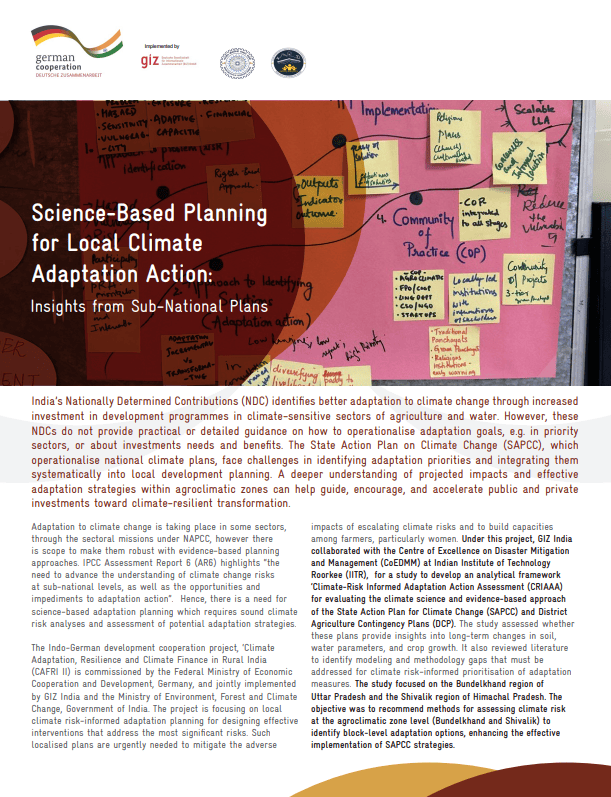
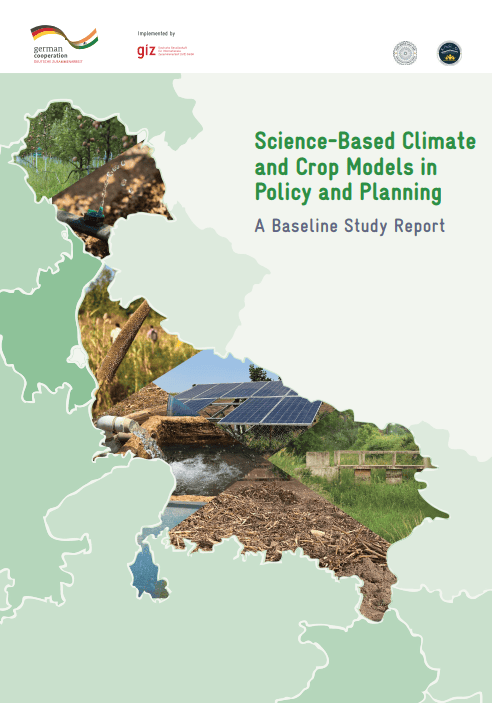
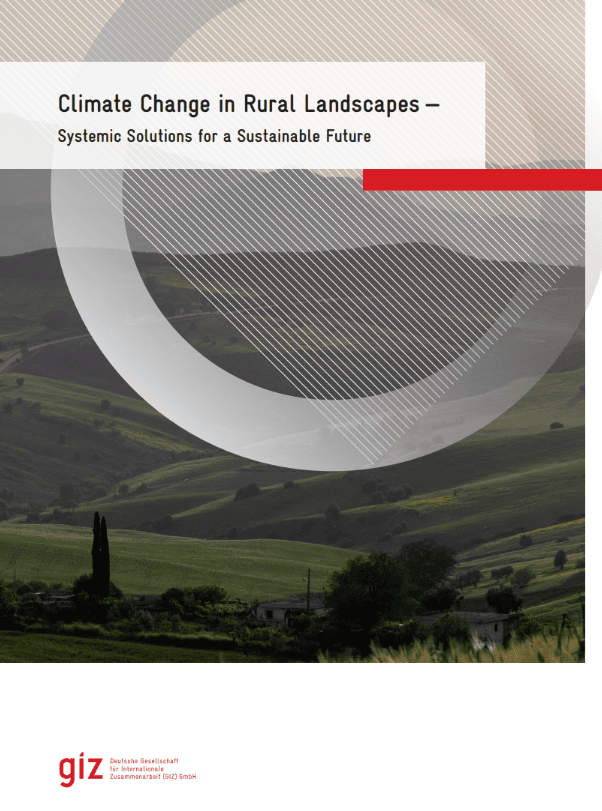
CRISP helps practitioners and policy makers in the agri-food sector to understand climate related risks, and to identify relevant adaptation options for theier spedific agricultural systems.
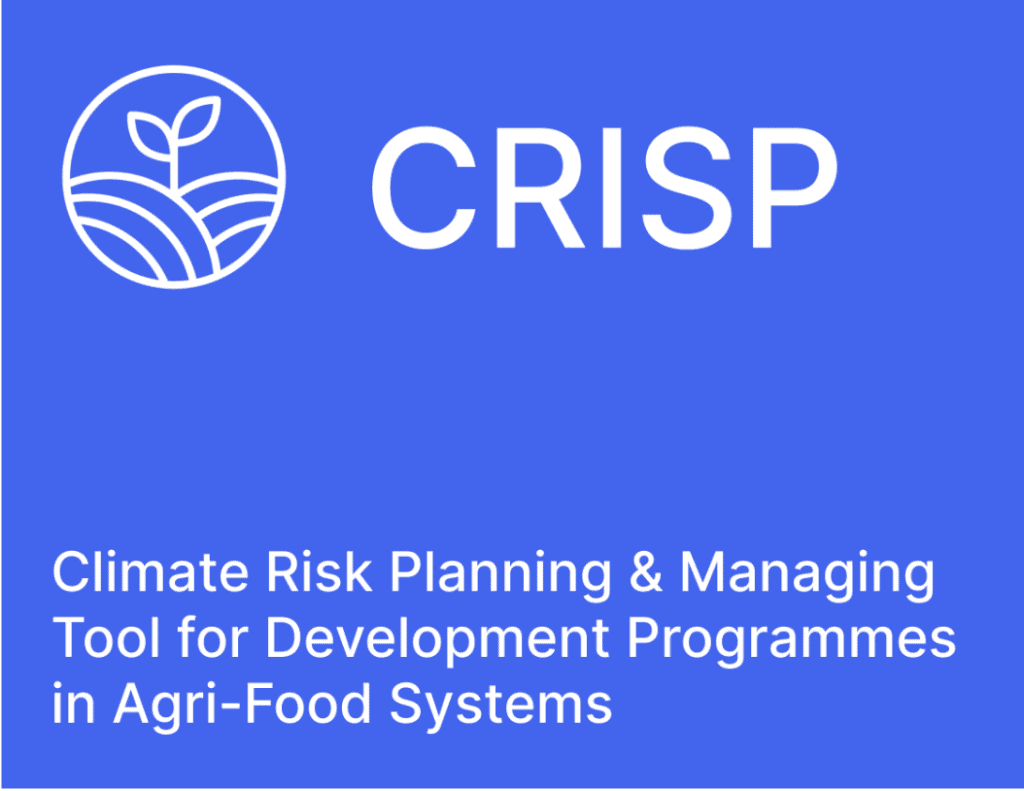
The Climate Risk Sourcebook (CR‐SB) delivers a conceptual framework for a comprehensive Climate Risk Assessment (CRA) together with modular instructions, divided in eight modules, on how it can be conducted.
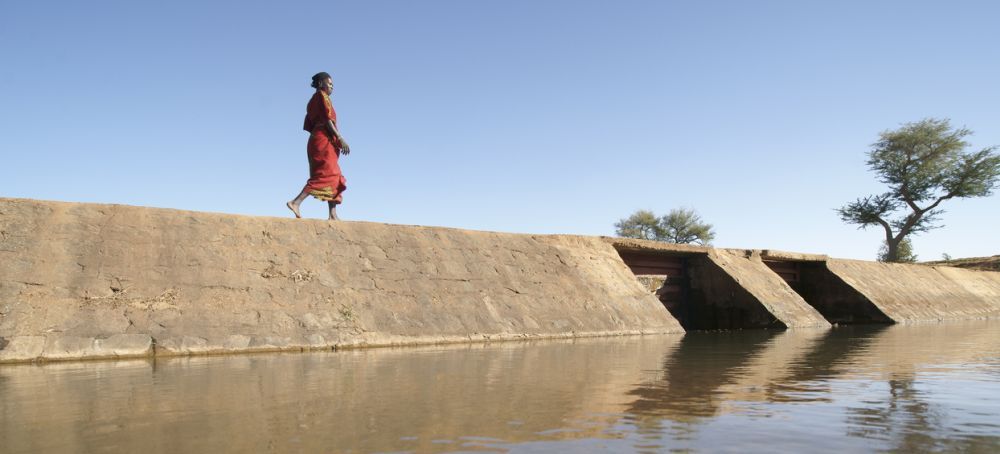
You need to load content from reCAPTCHA to submit the form. Please note that doing so will share data with third-party providers.
More InformationYou need to load content from reCAPTCHA to submit the form. Please note that doing so will share data with third-party providers.
More InformationYou are currently viewing a placeholder content from Google Maps. To access the actual content, click the button below. Please note that doing so will share data with third-party providers.
More InformationYou are currently viewing a placeholder content from Google Maps. To access the actual content, click the button below. Please note that doing so will share data with third-party providers.
More InformationYou are currently viewing a placeholder content from Mapbox. To access the actual content, click the button below. Please note that doing so will share data with third-party providers.
More InformationYou are currently viewing a placeholder content from OpenStreetMap. To access the actual content, click the button below. Please note that doing so will share data with third-party providers.
More Information